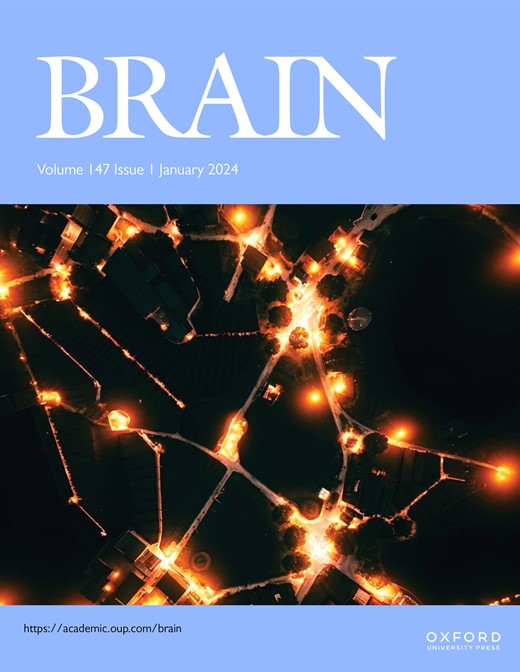Correction of sodium channel mutations in sensory neurons reverses aberrant properties
IF 10.6
1区 医学
Q1 CLINICAL NEUROLOGY
引用次数: 0
Abstract
Inherited erythromelalgia, small fiber neuropathy and paroxysmal extreme pain disorder are caused by gain-of-function mutations in the voltage gated sodium channel Nav1.7. How different mutations in the same channel enhancing electrogenesis in sensory neurons results in such distinct disease presentations remains unknown. Most of the work analysing the impact of these mutations on electrophysiological properties has utilized over-expression systems in cell lines and rodent sensory neurons, which may differ from the natural context. We have differentiated sensory neurons from iPSCs derived from patient samples that have the Nav1.7 A1632G mutation. This strategy reveals changes in electrophysiological properties not previously observed in cell lines, that may be important for disease presentation. Further, using CRISPR/Cas9, we corrected this mutation which reduced the underlying hyperexcitability, providing a path for personalized medicine to treat these disorders and introduced the mutation into control iPSCs which generated hyperexcitability providing causality. iPSC sensory neurons are a robust, scalable, and relevant model to study the effects of gain-of-function mutations in ion channels in pain-related disorders.纠正感觉神经元钠通道突变可逆转异常特性
遗传性红斑性肢痛症、小纤维神经病和阵发性剧痛障碍是由电压门控钠通道Nav1.7的功能获得突变引起的。同一通道中不同的突变如何增强感觉神经元的电发生,导致如此不同的疾病表现仍不清楚。大多数分析这些突变对电生理特性影响的工作都利用了细胞系和啮齿动物感觉神经元的过表达系统,这可能与自然环境不同。我们已经从来自患者样本的具有Nav1.7 A1632G突变的iPSCs中分化出感觉神经元。这种策略揭示了以前未在细胞系中观察到的电生理特性的变化,这可能对疾病的表现很重要。此外,利用CRISPR/Cas9,我们纠正了这种突变,减少了潜在的高兴奋性,为个性化药物治疗这些疾病提供了一条途径,并将这种突变引入到产生高兴奋性的控制iPSCs中,从而提供了因果关系。iPSC感觉神经元是一个强大的、可扩展的、相关的模型,用于研究疼痛相关疾病中离子通道的功能获得突变的影响。
本文章由计算机程序翻译,如有差异,请以英文原文为准。
求助全文
约1分钟内获得全文
求助全文
来源期刊

Brain
医学-临床神经学
CiteScore
20.30
自引率
4.10%
发文量
458
审稿时长
3-6 weeks
期刊介绍:
Brain, a journal focused on clinical neurology and translational neuroscience, has been publishing landmark papers since 1878. The journal aims to expand its scope by including studies that shed light on disease mechanisms and conducting innovative clinical trials for brain disorders. With a wide range of topics covered, the Editorial Board represents the international readership and diverse coverage of the journal. Accepted articles are promptly posted online, typically within a few weeks of acceptance. As of 2022, Brain holds an impressive impact factor of 14.5, according to the Journal Citation Reports.
 求助内容:
求助内容: 应助结果提醒方式:
应助结果提醒方式:


